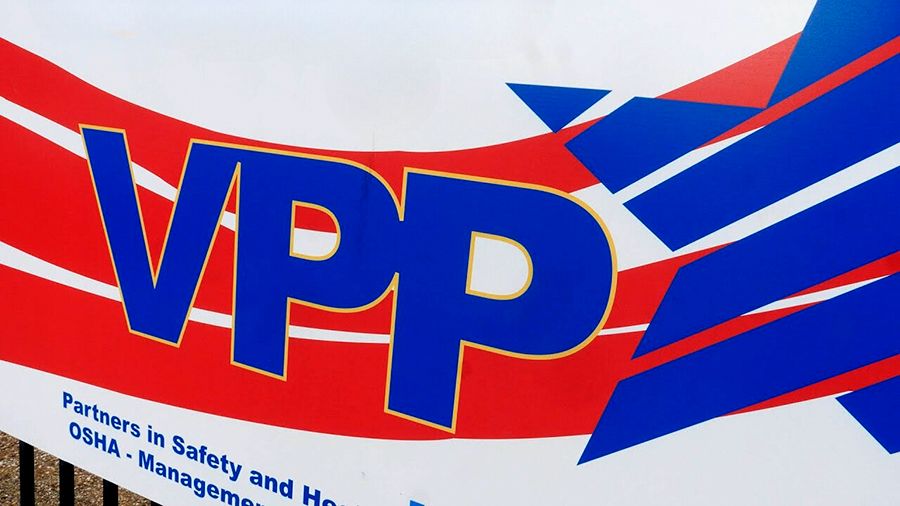Contributor: Chris Williams, CAE, Executive Director, VPPPA
OSHA has undertaken its most ambitious effort yet to modernize the Voluntary Protection Program, the gold standard in safety and health management systems. Since 1982, VPP has grown to represent nearly 2,000 high-performing sites across the country who have committed to the program’s core principles of labor involvement, management commitment and regulatory oversight in pursuit of continuous EHS&S improvement. These principles, when combined with VPP’s use of annual self-evaluations and OSHA-led full site audits every 3-5 years—elements that hold sites and companies directly accountable for worker safety—set VPP apart from third-party SHMS.
OSHA began its VPP modernization efforts earlier this spring with the launch of a public comment period. OSHA developed a series of questions that focus on users’ opinions of the current program structure and how OSHA can evolve VPP to meet current and future EHS&S objectives. Areas for public input include incentives to grow and participate in VPP, as well as opportunities to identify pathways to bring third-party SHMS users into the program.
VPPPA and its members submitted comments and provided input on specific program elements via listening sessions at VPPPA’s Region II & III Conference in the Poconos in April, as well as at VPPPA’s Region VI Conference in Corpus Christi in May. OSHA’s proactive approach to modernization, gathering public input and direct VPP site feedback, should be applauded—indeed, these listening sessions have been critical in helping to shape the direction of program modernization and, more importantly, galvanize current and prospective VPP sites around VPP’s long-term growth.
What we’ve seen is this: OSHA and VPPPA view VPP modernization as a long-term process that is focused on creating the conditions for the program’s continued growth and success. Public input on what works—and what can work—has helped focus VPPPA’s evolutionary discussion on four key areas:
- Growing and strengthening the Special Government Employee program to better utilize these EHS&S experts beyond the traditional VPP site audit and maximize their knowledge, skills and experience for both current and prospective VPP sites;
- Creating a roadmap for users of third-party/consensus standard-based safety & health management systems like ISO45001 and ANSI Z10 to employ similar components of these systems in the VPP application process;
- Working with stakeholders in the EHS&S community to educate the public on what VPP is and its success in protecting workers; and
- Identifying opportunities to tailor and enhance elements of VPP to the construction industry to help spur increased involvement in the program.
That’s pretty ambitious, but VPP is a program built on ambition—to eliminate injuries and send every worker home in the same—or better—condition than which they arrived.
So what are the next steps?
OSHA is directly involved in VPPPA’s 2023 Safety+ Symposium September 17-20 at the Orlando World Center Marriott, in Orlando, FL. OSHA’s Safe & Sound initiative will have an entire track dedicated to disseminating EHS&S best practices gathered from across industry as part of the program. Just as important, OSHA plans on continuing its VPP modernization engagement efforts at VPPPA’s Safety+ as they begin the next phase of our collective efforts, discussing the initial findings from this spring’s public comment period and listening sessions with attendees.
These collaborative efforts are part of VPPPA’s long-term work to evolve the association and VPPPA’s Safety+ beyond VPP. In order to grow participation in the program, both OSHA and VPPPA must bring companies and sites to the proverbial table and help them achieve safety & health excellence. This means creating an inclusive environment that connects current VPP participants—and their vast knowledge of advanced EHS&S processes—with other high-performing companies to help evolve worker safety and health practices. The goal is simple: create an environment where the “best of the best” can come together and create the next great advancements in workplace safety and health, the ones that lead us to our ultimate vision of zero workplace injuries.
VPP modernization is a large part of this vision; creating a sustainable VPP that is continuously evolving and growing workplace safety practices has a trickle-down effect that OSHA and VPPPA can help spread to every worksite in America. So is growing and evolving VPPPA and VPPPA’s Safety+ to become the nexus of EHS&S. Together, we’ll achieve this vision.
